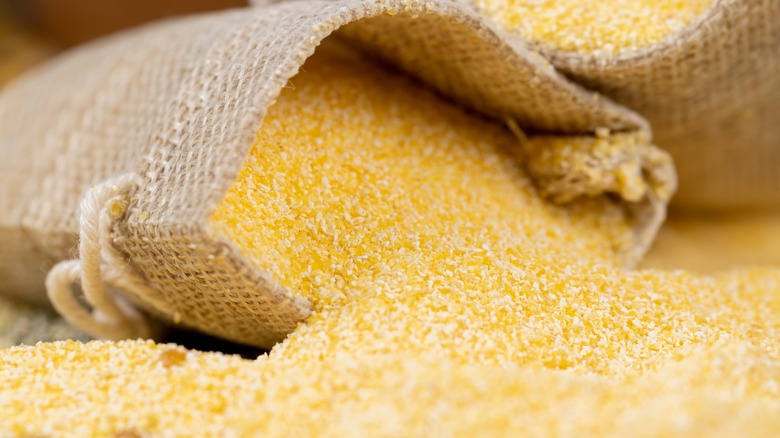How Italy's Love Of Polenta Actually Caused Severe Illness Centuries Ago
There's nothing like golden, grainy polenta. Made from boiled cornmeal, it's simple to prepare and requires few ingredients. Thanks to its versatility, it can be topped with fish, venison, or wild boar, and can be incorporated into batters from pancakes to biscuits and pie crust. But, at one time, this mild comfort food was once neither mild nor comforting. 1800s' Polenta-Mania left hundreds of Northern Italians sick, and the disease wasn't meat- or dairy-related. The culprit was none other than the corn — and perhaps polenta's versatility itself.
Corn has always been a big deal in Venetian agriculture, traded since at least the 1500s. But, during the 1600s, polenta was especially popular in Piedmont, Veneto, and Lombardy, and in these regions, polenta-dominance forced out other crops like millet, wheat, and rye, which required longer cultivation cycles and frankly just weren't in demand like polenta. Folks wanted what they wanted.
To say that 18th-century Northern Italians loved polenta wouldn't be wrong, but it also wouldn't be the complete picture. They chowed down on polenta largely because they had to — especially in agrarian regions of Italy which relied on corn as a staple crop. The problem was that foodies in Northern Italy chowed down on so much polenta that they started developing pellagra en masse. A hospital in Legnano admitted 124 pellagra sufferers between 1784 and 1787. Caused by severe niacin (vitamin B3) deficiency, the condition led to rashes, diarrhea, dementia, and ultimately death.
Too much of a good thing can be a bad thing
According to a study published by the journal Population, Italy's Ministry of the Interior and Ministry of Agriculture surveyed people in pellagra-plagued areas from 1879 to 1900. The data showed that pellagra often started with a dark red skin rash before causing stomach issues and eventually neurological disorders. The surveys also shed light on the socioeconomic patterns linked with the illness.
Historically, pellagra has afflicted poor populations around the world who subsist on corn for long periods, ultimately ending up malnourished. Farmers in agrarian Italy often experienced recurrent relapses of pellagra throughout the year depending on what food was available, with symptoms typically cropping up toward the end of the winter. Northern Italian farmers were casually recognized for the rash; the word "pellagra" translates to "rough skin" in the Lombard dialect.
Cases of pellagra continued cropping up in Italy until the early 1900s, but the disease largely fell to the past once foodies gained year-round access to a well-rounded, less corn-centric diet. Vitamin B wasn't discovered at all until 1937. Still, for a while, the endemic came with lasting cultural, social, and epidemiological ramifications. Pellagra's association with extreme poverty and an exclusive corn diet led people to consider corn a food for the poor. Polenta-Mania was over ... at least for a few decades until foodies developed the taste for it again.

